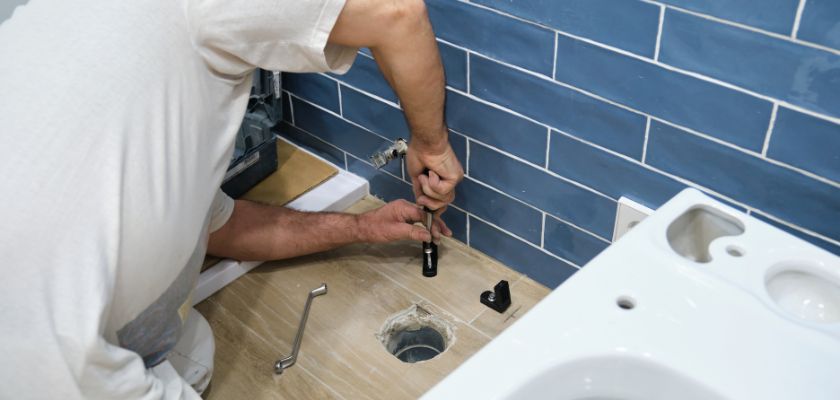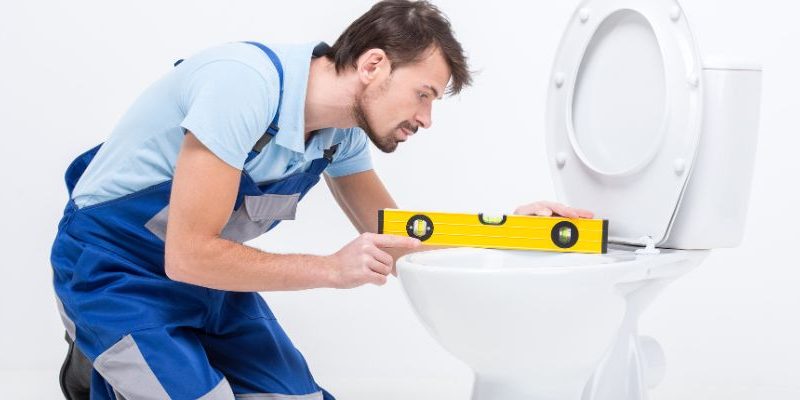Installing a toilet might seem like a straightforward task, but it involves several critical steps that can impact its functionality and durability. Whether you’re embarking on a DIY project or hiring a professional, avoiding common mistakes is crucial for a successful installation. This guide will highlight key errors to avoid, the professional toilet installation benefits, and when to seek toilet repair in Frisco, TX.
Table Of Contents
Understanding the Importance of Proper Installation

A well-installed toilet ensures optimal performance and longevity. Mistakes during installation can lead to leaks, instability, or inefficient flushing. Understanding the common pitfalls can help you avoid costly repairs and ensure your toilet operates smoothly.
Choosing the Right Toilet for Your Space
One of the first steps in a successful installation is selecting a toilet that fits your bathroom’s space and plumbing system. Here’s how to choose wisely:
Assessing Your Bathroom Layout
Before purchasing a toilet, measure your bathroom’s available space. Ensure there is enough room around the toilet for comfortable use and proper maintenance. Also, check the distance from the wall to the floor bolts, known as the rough-in size. Standard rough-in sizes are 12 inches, but older homes might have different measurements.
Selecting the Appropriate Toilet Style
Toilets come in various styles, including one-piece and two-piece models. One-piece toilets are easier to clean and offer a sleek appearance, while two-piece toilets are generally more affordable and easier to transport. Choose a style that complements your bathroom design and meets your functional needs.
Considering Water Efficiency
Modern toilets come with water-saving features that reduce water consumption without sacrificing performance. Look for models with the WaterSense label, which indicates they meet high-efficiency standards.
Preparing for Installation
Proper preparation is essential for a smooth installation process. Ensuring your workspace is ready and understanding the installation requirements can help you avoid common mistakes.
Inspecting the Existing Plumbing
Before installing a new toilet, inspect the existing plumbing for any issues. Check for leaks, corrosion, or damage to the pipes and flange. Address any plumbing problems before proceeding with the installation to prevent future complications.
Gathering Necessary Tools and Materials
Ensure you have all the required tools and materials for the installation. Common tools include a wrench, pliers, a level, and a putty knife. Materials such as wax rings, bolts, and sealing compounds are also essential for a successful installation.
Removing the Old Toilet
If you’re replacing an existing toilet, remove it carefully. Turn off the water supply, drain the tank, and disconnect the water line. Remove the bolts securing the toilet to the floor, and lift the old toilet off the flange. Clean the area thoroughly before installing the new toilet.
Common Mistakes to Avoid During Installation

Even with careful planning, mistakes can still occur during installation. Understanding common errors can help you avoid them and ensure a successful toilet installation.
Incorrect Wax Ring Installation
The wax ring creates a seal between the toilet base and the flange to prevent leaks. An improperly installed wax ring can lead to water leakage and damage to the flooring.
Ensuring Proper Wax Ring Placement
When installing the wax ring, ensure it is centered and properly aligned with the flange. Press the wax ring firmly against the flange to create a tight seal. Avoid using too much force, as this can damage the ring or misalign it.
Choosing the Right Wax Ring Thickness
Wax rings come in different thicknesses. Ensure you choose the correct thickness for your installation. If the existing flange is slightly below the floor level, you may need a thicker wax ring or a wax ring with an extended horn to ensure a proper seal.
Misalignment of the Toilet
Proper alignment of the toilet is crucial for stable operation and preventing leaks. Misalignment can cause instability and affect the toilet’s performance.
Checking the Toilet’s Level
After positioning the toilet over the wax ring, use a level to check its alignment. Ensure the toilet is level from side to side and front to back. Adjust the position if necessary before securing it with bolts.
Securing the Toilet Properly
Once the toilet is aligned, secure it with the floor bolts. Avoid overtightening the bolts, as this can crack the toilet base. Tighten the bolts evenly and check the toilet’s stability. If it wobbles, adjust the bolts or use shims to achieve a stable installation.
Failing to Test the Installation
Testing the installation is a crucial step to ensure everything is functioning correctly. Skipping this step can lead to unnoticed issues that may cause problems later.
Checking for Leaks
Turn on the water supply and allow the tank to fill. Check for any leaks around the base of the toilet and the connection points. Flush the toilet several times to ensure it operates smoothly and no leaks are present.
Inspecting the Flush Mechanism
Verify that the flush mechanism is working correctly. Ensure the handle operates smoothly and the toilet flushes effectively. Adjust the flush mechanism if needed to achieve optimal performance.
The Benefits of Professional Toilet Installation

While DIY installation can be tempting, opting for professional toilet installation offers several advantages. Understanding the professional toilet installation benefits can help you make an informed decision.
Expert Knowledge and Experience
Professional plumbers have extensive knowledge and experience in toilet installation. They are familiar with the common pitfalls and best practices, ensuring a smooth and efficient installation. Their expertise helps prevent mistakes and ensures that the toilet is installed correctly.
Access to Specialized Tools and Equipment
Plumbers have access to specialized tools and equipment that may not be readily available to homeowners. These tools can make the installation process easier and more efficient, reducing the risk of errors.
Guarantee of Quality Work
Many professional plumbers offer a guarantee of their work. This means that if any issues arise after installation, they will address them promptly at no additional cost. This peace of mind is a significant advantage of hiring a professional.
When to Seek Toilet Repair in Frisco, TX
Even with proper installation, issues can arise over time. Knowing when to seek toilet repair in Frisco, TX can help you address problems before they escalate.
Persistent Leaks
If you notice persistent leaks around the base of the toilet or from the tank, it’s time to call a plumber. Leaks can cause water damage and lead to more significant plumbing issues if not addressed promptly.
Frequent Clogs
If your toilet becomes clogged frequently despite using it correctly, it may indicate a problem with the plumbing or the toilet itself. A professional plumber can diagnose and resolve the issue to prevent future clogs.
Inconsistent Flushing
If the toilet’s flush mechanism is inconsistent or ineffective, it may require repair or adjustment. A plumber can inspect the flush system and make necessary repairs to ensure proper operation.
Final Wording
Installing a toilet involves several critical steps, and avoiding common mistakes is essential for a successful installation. By understanding the common pitfalls, recognizing the professional toilet installation benefits, and knowing when to seek toilet repair in Frisco, TX, you can ensure your toilet operates smoothly and efficiently. Whether you choose to tackle the installation yourself or hire a professional, attention to detail and proper preparation are key to achieving a functional and long-lasting toilet installation.
FAQ’s
1. What should I do if my newly installed toilet wobbles?
If your toilet wobbles after installation, it might not be securely bolted to the floor or could be improperly aligned. Check the floor bolts to ensure they are tightened evenly, and use shims if necessary to stabilize the toilet. If the problem persists, consult a professional for assistance.
2. How can I prevent leaks around the base of my toilet?
To prevent leaks around the base, ensure that the wax ring is properly installed and centered between the toilet and the flange. Check for any damage to the wax ring or the flange, and replace them if needed. Tightening the floor bolts securely can also help maintain a watertight seal.
3. What are the common signs that my toilet installation needs repair?
Common signs that your toilet installation may need repair include persistent leaks, frequent clogs, and inconsistent flushing. If you experience any of these issues, it may be time to call a professional plumber to inspect and resolve the problem.
4. Is it worth hiring a professional for toilet installation?
Hiring a professional for toilet installation is often worth the investment. Professionals bring expertise and specialized tools to ensure a correct and efficient installation. They can also provide warranties and address any issues that arise after installation.
5. Can I install a toilet myself, or should I always hire a plumber?
While DIY toilet installation is possible, it requires careful attention to detail and proper tools. If you are unsure about any part of the process or lack experience, hiring a plumber ensures that the installation is done correctly and reduces the risk of future problems.







